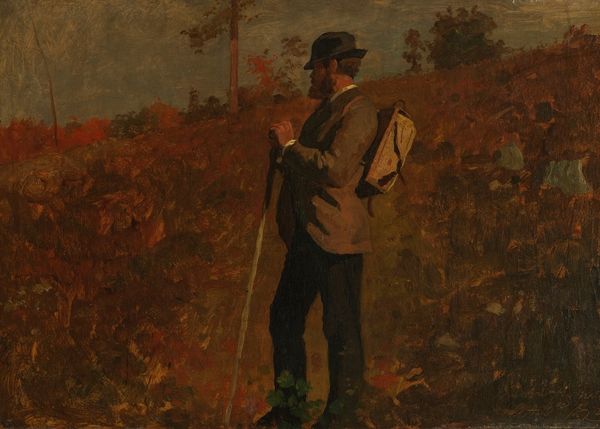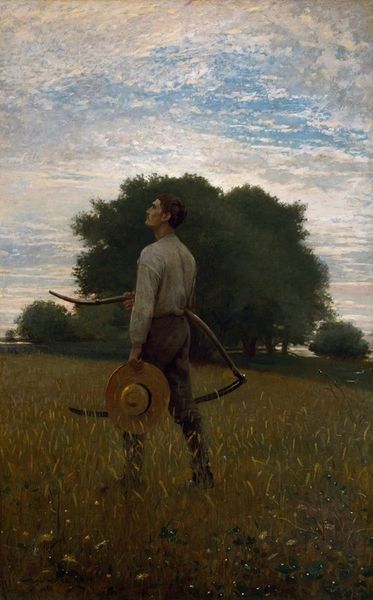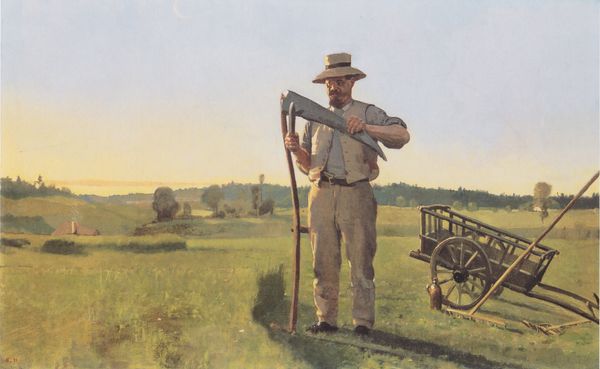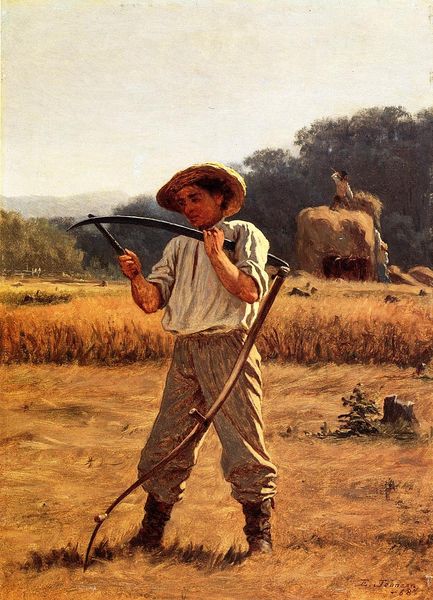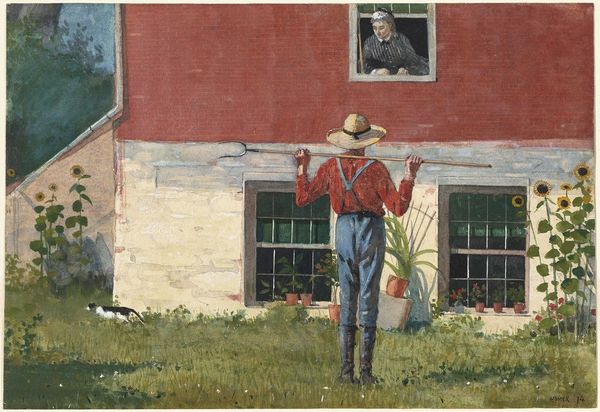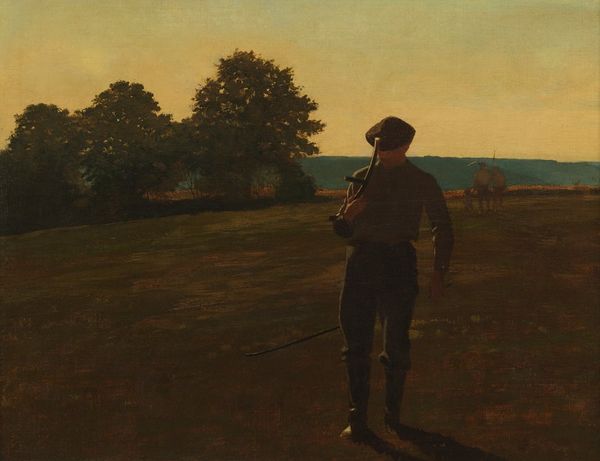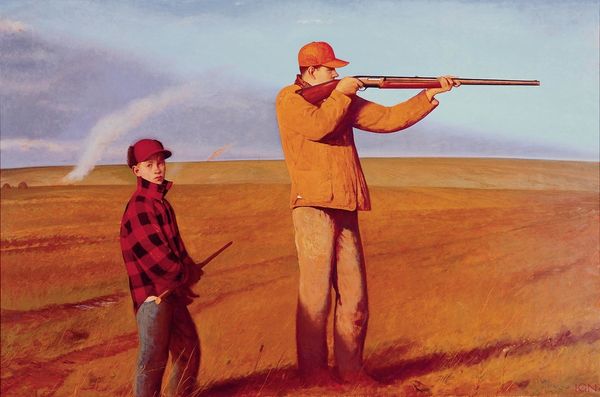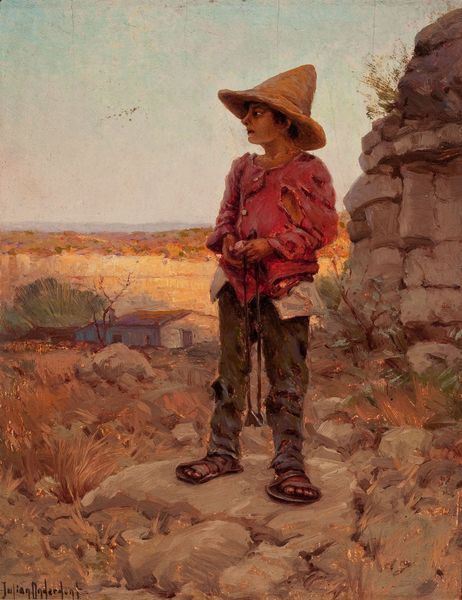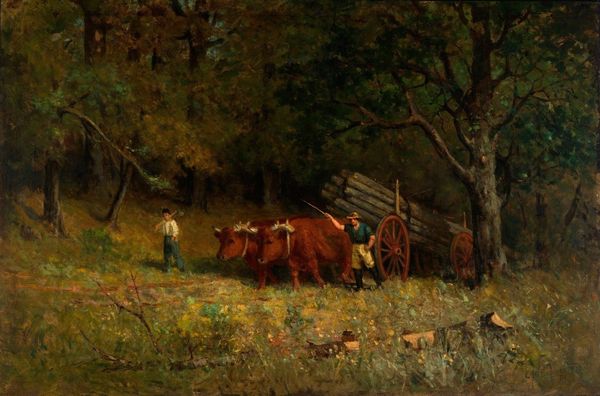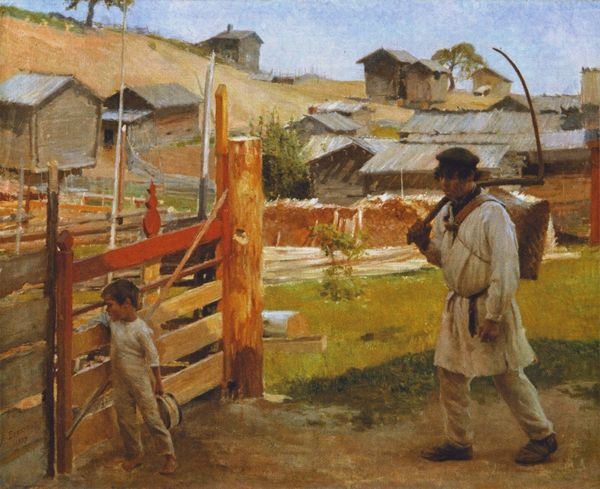
plein-air, oil-paint
#
portrait
#
impressionism
#
plein-air
#
oil-paint
#
landscape
#
oil painting
#
male-portraits
#
genre-painting
#
realism
Copyright: Public domain
Editor: Here we have "Farmer with a Pitchfork," an oil painting by Winslow Homer. Although the exact date is unknown, it’s a striking image. There's something almost confrontational in the way the farmer is presented from behind, yet simultaneously anonymous and ordinary. How do you interpret this work? Curator: This piece immediately speaks to the complexities of representing labor, particularly in late 19th-century America. Homer often depicted rural life, but not without a critical lens. Notice how the farmer is framed – his face is obscured, almost erasing his individuality. Editor: Yes, he becomes almost a symbol. Curator: Precisely. Consider the social context: post-Civil War, the rise of industrialization, and changing agricultural practices. Who did this land belong to? Homer is making a commentary on the often invisible labor that built, and continues to sustain, the nation. This farmer is a cog in a bigger, perhaps unjust, system. Do you feel that the artist romanticizes his subject? Editor: I'm not so sure, especially knowing this historical context. The dim colors surrounding his silhouette don’t come off as classically beautiful. It feels more melancholic, even. Curator: Exactly. The painting highlights the farmer's alienation. Even his bright shirt fails to convey joy. The impressionistic style, while beautiful, is also used to soften his identity, blurring him into the landscape itself. How does that inform our view of this occupation? Editor: So, what seemed like a straightforward image becomes charged with social and political commentary. It encourages a critical examination of the relationship between land, labor, and identity. Curator: Indeed. It invites us to think about who is visible, who is not, and who benefits from their labor. Editor: This conversation changed the way I looked at Homer's work, adding so much complexity. Curator: For me as well. I learned a great deal about understanding paintings through historical contexts and using an intersectional approach to look at how labor is constructed within society.
Comments
No comments
Be the first to comment and join the conversation on the ultimate creative platform.
